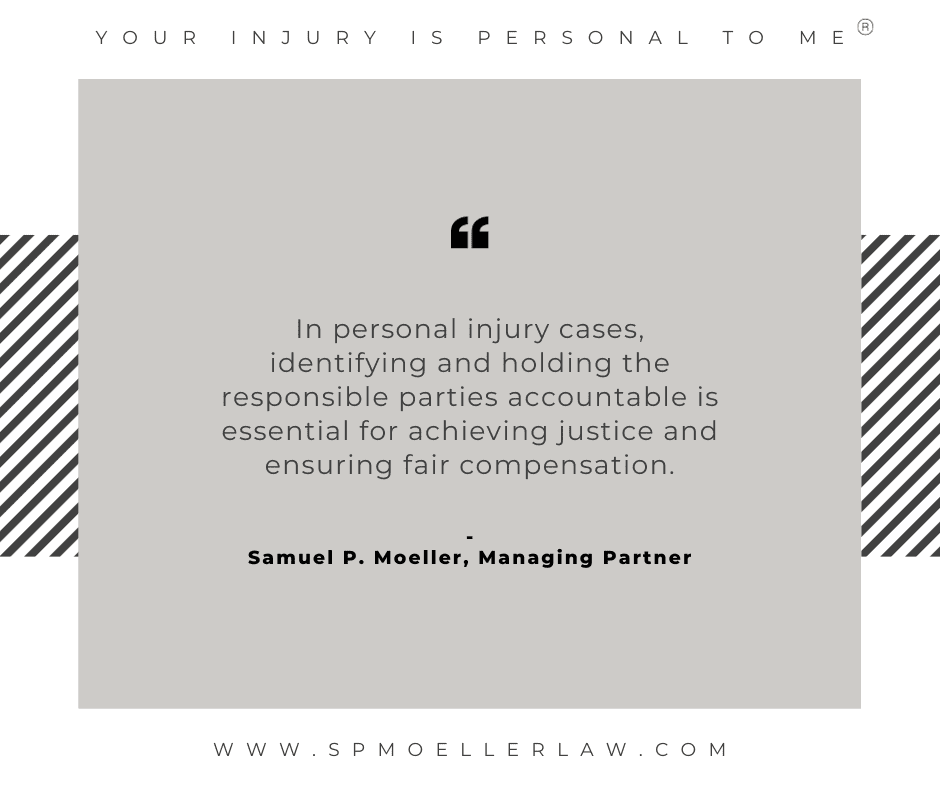Personal injury cases can be complex and emotionally draining, especially when the injury results from the negligence or intentional actions of another party. Determining who or what can be held responsible in such cases is crucial in seeking justice and compensation for the injured party. In this article, we’ll explore the various entities or individuals that can be held responsible in personal injury cases and how the legal system deals with these matters.
Individuals
1.1. Negligent Individuals When a personal injury occurs due to the negligence of an individual, that person can be held legally responsible. Common examples include car accidents caused by a distracted or reckless driver, slip-and-fall incidents on someone’s property due to poor maintenance, or physical altercations resulting in injuries.
1.2. Intentional Torts In cases where an injury is intentionally caused by someone’s actions, the responsible party can also be held accountable. Examples of intentional torts include assault, battery, and defamation, which can lead to civil lawsuits in addition to potential criminal charges.
Employers
2.1. Employee Actions Employers can be held responsible for their employees’ actions if the injury occurred within the scope of employment. This concept is known as “vicarious liability” or “respondeat superior.” For instance, if a delivery driver causes an accident while on the job, the employer may share liability.
2.2. Negligent Hiring or Supervision Employers may also be held accountable if they failed to conduct proper background checks, supervise their employees, or address known issues related to an employee’s conduct, which ultimately led to the injury.
Property Owners
Property owners have a legal obligation to maintain a safe environment for visitors, tenants, or customers. When an injury occurs on their premises due to dangerous conditions that could have been addressed, they can be held responsible. Slip and fall accidents, dog bites, and injuries resulting from inadequate security are examples of cases where property owners may be liable.
Manufacturers and Product Suppliers
In product liability cases, manufacturers, and suppliers can be held responsible for injuries caused by defective products. This can include design defects, manufacturing defects, or a failure to provide proper warnings or instructions for safe use. Common examples involve defective automotive parts, pharmaceuticals, or consumer goods.
Government Entities
Government agencies can also be held accountable in personal injury cases. This might involve injuries caused by dangerous road conditions, public transportation accidents, or government employees’ actions. However, suing a government entity may have additional legal requirements and limitations.
Medical Professionals
Medical malpractice is a specific area of personal injury law where healthcare providers, such as doctors, nurses, or hospitals, can be held responsible for injuries resulting from substandard medical care. This could involve misdiagnoses, surgical errors, medication mistakes, or failure to obtain informed consent.
Third Parties
Sometimes, multiple parties may share responsibility for an injury. In such cases, the legal system determines each party’s degree of liability and may hold multiple parties responsible. An example of this could be a car accident involving multiple vehicles, where the actions of more than one driver contributed to the collision.
Personal injury cases encompass a wide range of scenarios and can involve individuals, employers, property owners, manufacturers, government entities, and medical professionals. Identifying who or what is responsible for the injury is a crucial step in pursuing a legal claim for compensation and justice.
If you or a loved one has suffered a personal injury, it’s important to consult with an experienced attorney who can assess the specific circumstances of your case and help you navigate the legal process to hold the responsible parties accountable. Understanding the complexities of personal injury cases is essential for seeking the compensation and closure that victims deserve.
